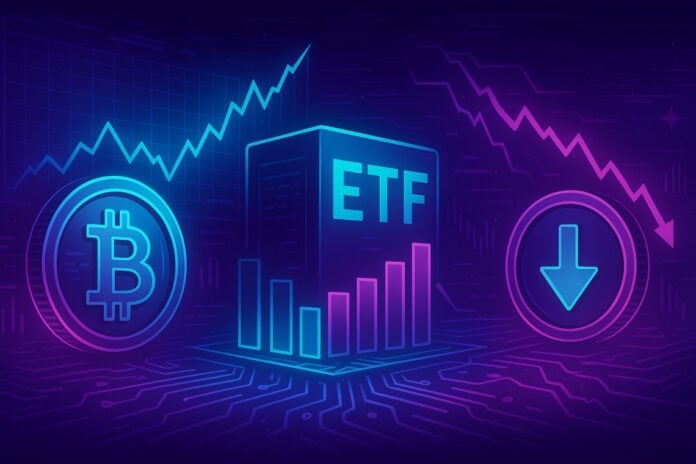The current month is proving to be the worst ever for Bitcoin spot ETFs in terms of net outflows. The price of bitcoin has hit a seven-month low, fueling the narrative that demand for these financial products has “broken”.
Only the giant BlackRock, with its IBIT ETF, has recorded approximately $2.47 billion in redemptions in recent weeks. This figure has raised questions about the sustainability of demand and the possibility that the ETF momentum has now run its course.
Summary
The Context: Declining Prices and Investor Reactions
According to Nicolai Søndergaard, a research analyst at the onchain analytics firm Nansen, the current situation reflects a rather classic market dynamic. “The reason for these outflows from ETFs is quite simple: the market is declining and, consequently, it is normal for ETFs to experience outflows, as investors prefer to withdraw their money,” explains Søndergaard.
This reaction does not necessarily represent a structural loss of confidence in bitcoin or ETFs. Rather, it is a physiological response to a negative market phase, where volatility and uncertainty drive many to liquidate their positions.
The Role of Macroeconomic Factors
The future direction of ETF flows will largely depend on the performance of global markets and macroeconomic policies. If conditions improve, it is likely that flows will turn positive. Conversely, further deterioration could fuel new outflows.
A key element is represented by global liquidity and the recent tightening of macroeconomic conditions. These factors have certainly contributed to the negative climate, although they are not the only cause. Many operators closely monitor these indicators, which are certainly not conducive to significant price increases in the short term.
Solana and Investment Diversification
An interesting fact concerns Solana, which is experiencing inflows into its ETFs, although still on a smaller scale compared to bitcoin and ethereum.
This phenomenon suggests a certain risk appetite among investors, willing to expose themselves not only to bitcoin and ethereum but also to other assets through ETFs.
The growth of inflows into Solana, although modest, indicates that the market has not completely closed off to diversification and the search for new opportunities. The more dynamic investors appear ready to explore alternatives, while maintaining a certain level of caution.
What On-Chain Data Tells Us: Mixed Signals
The analysis of onchain data provides a more nuanced reading of the situation. According to Søndergaard, the signals are mixed: some of the top PnL wallets continue to accumulate various tokens, while other addresses associated with “smart money” are opting for stablecoins.
This trend is not new: for some time now, many investors have chosen to park their capital in stablecoins to earn yields, especially during periods of uncertainty like the current one. The behavior of more sophisticated operators thus suggests a wait-and-see strategy, anticipating greater clarity on the future of the markets.
Is Trust in ETFs Really “Broken”?
Despite the negative numbers in recent days, discussing a structural crisis in demand for bitcoin ETFs seems premature. The outflows appear to be a physiological reaction to a phase of market weakness, rather than a sign of permanent distrust.
The recent history of spot bitcoin ETFs is still short and marked by high volatility. Institutional and retail investors are still learning to manage these instruments in a rapidly evolving market environment.
Entry and exit decisions are often driven by exogenous factors, such as monetary policies and global liquidity, rather than a definitive judgment on the value of bitcoin as an asset.
Future Prospects: Between Anticipation and Opportunity
Looking ahead, much will depend on the evolution of the macroeconomic context and bitcoin’s ability to regain ground. If conditions improve, a return of positive flows into ETFs cannot be ruled out.
Meanwhile, the growing interest in alternative assets like Solana suggests that the market remains vibrant and ready to seize new opportunities.
In conclusion, the recent price drop and outflows from ETFs represent a phase of adjustment rather than an irreversible crisis.
Investors are simply adapting their strategies to a more uncertain environment, awaiting clearer signals from the market and the global economy. Attention remains high, and the future of bitcoin ETFs is still to be written.


